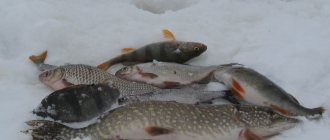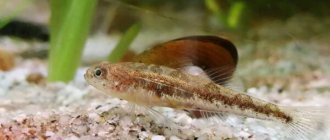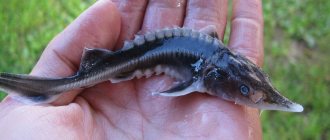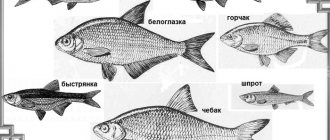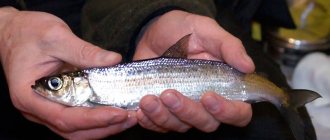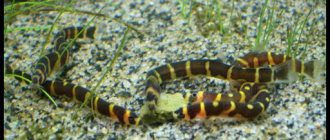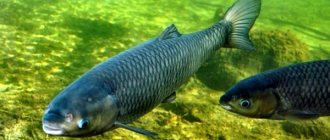Predators among fish are those that feed not only on plant foods, but are also not averse to snacking on living settlers of the underwater kingdom. This priority is given to them by the possession of a significant number of pointed teeth.
The underwater world surprises with its diversity: from giant wild monsters to small domesticated pets, which are usually divided into marine and freshwater inhabitants.

Marine life
Carnivorous seafarers are popular among fishermen, as they are included in the menu of nutritious delicacies that are in demand in cafes and markets.
But they are respected not only for their taste. After all, meeting them is life-threatening. Photos of predatory fish in the seas and oceans are more valuable than others, and it is almost impossible to take them in their natural habitat.
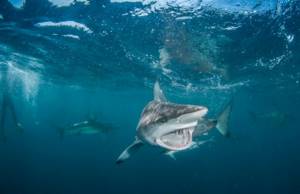
Conclusion
Many species of predatory fish, in addition to sharp teeth and physical features, have specific means of camouflage. This may be a non-standard color, the presence of decorative whiskers, growths, protrusions, fringes, warts and other elements designed to camouflage the fish in the conditions of the underwater landscape in which the hunt takes place.
Camouflage is needed, first of all, by fish that feed on other, smaller fish. If eating plankton does not require much effort, then fast and maneuverable prey still needs to be caught. Most predators do this as an ambush.
Different fish have different hunting methods. Some species overtake their prey openly, others set up an ambush and choose the right moment. A common technique when tracking prey is to bury the fish in the sand. As a rule, these types of predatory fish have eyes shifted to the top of the head, so, being almost completely covered with sand, they see what is happening around them.
The capture of the victim, in most cases, occurs with the help of teeth. However, there are also exotic methods. For example, an injection from poisonous thorns or an electric shock. The latter method is used by various types of stingrays.
Barracuda
There are 27 species of individuals in the family. In size, they grow up to 100 cm in length, and in weight do not exceed 10 kilograms. Being doll-sized, they seem harmless, but sailors nicknamed them “tigers of the seas.”
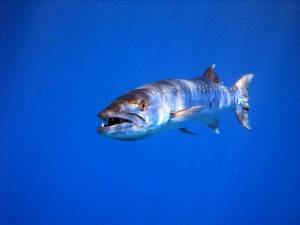
The name of the predatory fish was given for its bloodthirstiness. By gathering in flocks and attacking en masse, they are capable of inflicting fatal damage. They have hundreds of cases of attacks on people. Many of their victims do not survive.
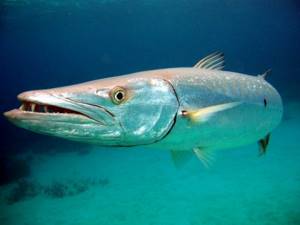
Marine species
This is the environment where most of the killers live. These include the following types:
- sharks;
- moray eels;
- barracudas;
- swordfish;
- sea features;
- garfish;
- tuna;
- bonito;
- bluefish;
- croakers;
- laurels;
- rock perches;
- sea ruffs;
- galleys;
- different types of cod;
- catfish;
- pink salmon;
- eelpout;
- brown greenlings;
- glosses;
- belugas;
- sturgeon;
- sturgeon;
- flounder;
- Lichia;
- whiting;
- whips.
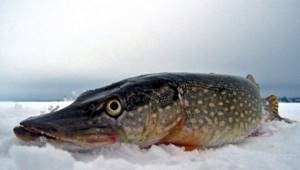
The 11-meter-long white shark is the most dangerous carnivorous sea creature for humans. Among 250 varieties, 29 representatives are officially recognized as aggressive. Tiger, hammerhead, mako, katran, gray and spotted scyllium - with sizes of about two meters, they are no less dangerous. All representatives of sharks have not only sharp teeth, but also prickly spines on their hard skin. Because of them, blows are just as dangerous as bites. Although the whale shark is much larger than others (body length is up to 15 meters), it is quite safe for humans, because it feeds on plankton.
The abilities of these fish are unique. Thanks to the inner ear, which “hears” low-frequency sounds, they can detect water vibrations at a distance of up to 200 meters - within this range, a shark can easily detect a swimming person. The sense of smell is even better developed. This predator can sense a drop of blood at a distance of up to four kilometers. Vision is ten times better than human vision. During a hunt, fish accelerates to 50 km per hour.
Moray eels prefer coral reefs, underwater caves and algae. Large individuals grow 3 meters in length and 30 centimeters in thickness. Due to its lightning speed and strong grip, scuba divers compare it to a bulldog. The body, somewhat reminiscent of a snake, is an excellent advantage in camouflage. Moray eels prefer victims that are larger than themselves. It uses its tail to hold its prey and tear it to pieces. Many divers die from this. Poor eyesight is compensated by excellent sense of smell.
Barracudas (sphyrenes) in their shape resemble huge three-meter pikes. The mouth looks terrifying due to the protruding lower jaw. Thanks to good vision, the fish quickly reacts to any bright objects and water fluctuations. Large individuals prefer to hunt alone, while small ones gather in schools. Barracuda is not selective in food, it easily feeds on poisonous fish - because of this, its meat is toxic and is not used in cooking. The greatest danger for a diver is the possibility of losing a leg or suffering wounds that are difficult to heal. Sometimes the attacks of the sephirens are attributed to sharks.
A three-meter swordfish weighs approximately 400-450 kg. On the upper jaw there is a growth of one and a half meters, strongly reminiscent of the bladed weapon of the same name. The shape of a fish is associated with a torpedo. The impact force of this bone (4 tons) is amazing - it is enough to pierce 40 cm of oak or 2.5 cm of metal. Due to the lack of scales and streamlined shape, it accelerates to 130 kilometers per hour. It even feeds on sharks.
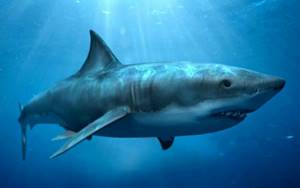
The white shark is the most dangerous to humans
The monkfish was so named because of its terrifying appearance. The two-meter body weighs approximately 20 kg. The mouth is wide and resembles a crescent, while the eyes are set close. It lures prey with the help of a long outgrowth of the dorsal fin, reminiscent of a fishing rod. This explains the origin of the second name - European anglerfish.
Tuna is a schooling predator of Atlantic waters. Although the carcass does not exceed 4 meters, it weighs almost half a ton. It accelerates to 90 km/h and can maintain this speed for a long time thanks to its spindle-shaped body. Loves mackerel and sardines. Red tuna meat is widely used in gastronomy. The French call it sea veal.
Cannibals
To understand which fish is the most predatory, just look at the shark. Some specimens from the cartilaginous order reach 20 meters.
The funniest thing is that they are not as scary as smaller lovers of fresh meat. Such as white and tiger sharks, which are called fierce representatives of their species. A significant proportion of human deaths were collected precisely on their account. Armed with powerful jaws, they deftly cut victims into pieces.
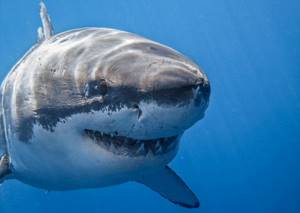
Sailfish - the fastest fish in the world
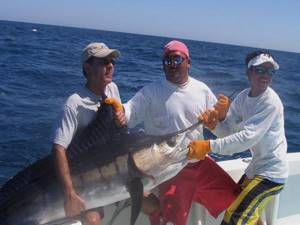
Which sea predator moves the fastest? Of course, sailfish. It belongs to the order Perciformes. As a rule, it lives in warm seas. But some species can live in temperate latitudes. Its main distinguishing feature is the presence of a high and long fin on its back, reminiscent of a sail. This is a very active predator. In pursuit of prey, it is capable of reaching speeds of up to 100 km/h. These fish feed mainly on sardines, mackerel, mackerel, anchovies and so on. Catching predatory fish is a very interesting activity for anglers. Often bait is used for this. Many anglers prefer to catch sailfish using spinning rods.
Freshwater eaters
They are not only a valuable commercial resource, but also play the role of orderlies and cleaners of the reservoir. Possessing a brutal appetite, they feed on diseased, dying species. By category they are divided into many instances.
Pike
Ambush hunter. Chooses places with little current for housing. The body color serves as good camouflage among reeds and grassy vegetation. They are cold-blooded, have an elongated spear-like shape and grow up to 50 cm, and weigh up to 30 kg.
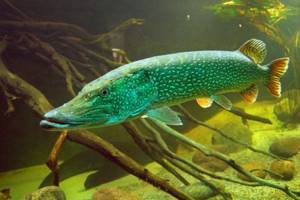
The fish includes not only its fellow fish in its diet. Hunting is also carried out for small animals. The incisors of varying sizes on the slightly protruded lower jaw are the main weapon for catching food.
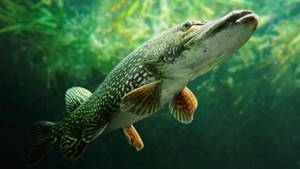
Zander
A predatory river fish, with large scales and a high fin sticking out on its back like an Iroquois. It prefers to live in warm streams, depending on the time of year, and also away from thickets, where it can become easy prey for other residents. There he easily finds food for himself.
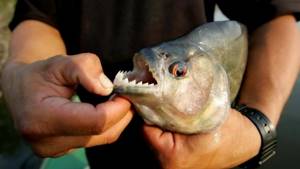
But due to its tiny mouth, its food mainly consists of small fish, as well as insect larvae. While actively hunting, the stupid pike perch gets carried away and sometimes jumps ashore.

Freshwater predators
There are no fewer predatory freshwater fish. They live in rivers and lakes and actively eat sick individuals. Fishermen know river fish well, because they are often used in cooking. Winter and summer fishing on lakes is more common among amateurs.
River inhabitants
The following species live in rivers:
- chubs;
- asps;
- catfish;
- pike;
- zander;
- burbot;
- sterlet;
- grayling;
- bershi;
- acne;
- Arctic omuls;
- lumpfish.
The chub is beautiful with its dark green back, orange fins, slightly golden sides and a dark border along the scales. It prefers small crayfish, young of other species and larvae.
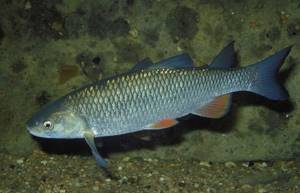
Zherekh likes to quickly jump out of the water and quickly fall on its prey. Often the prey is simply petrified by a blow from the tail and body. He usually catches bleak, since it lives almost at the surface of the water. Asp varieties are found in large reservoirs and rivers.
Catfish is the largest predator that has no scales. With a length of five meters, its weight reaches almost half a ton. The fish spends the day in the pits of reservoirs in the European part of Russia, and at night it goes out hunting. It catches not only mollusks and other small freshwater inhabitants, but also birds. Catching a catfish is quite difficult due to its strength and intelligence.
The pike is so bloodthirsty that it even preys on its relatives. Loves rudd, roach and crucian carp, tries to avoid ruffs and perches because of their spines. Before swallowing, it waits for the moment when the caught victim stops moving. Can eat mice, frogs and birds.
Pike perch lives only in clean rivers and can live in sea waters. Due to its small throat, it feeds only on small fish. Avoids vegetation because it is afraid of being caught by pike.
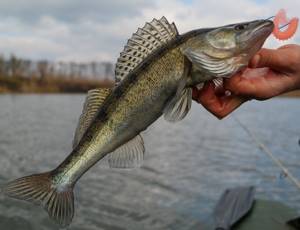
The body of the burbot is compressed and somewhat resembles the body of a catfish; there are antennae on the chin. The belly is whitish, the rest of the body is grayish-green with spots. Does not disdain ruffs and perches, which are more voracious than pike.
Lake waters
Many river species also live in lakes. These include the following names of predatory fish:
- trout;
- whitefish;
- Baikal omuls;
- perches;
- rotans;
- alpine char;
- ruffs;
- sculpins;
- lines;
- amii.
Most of the trout are on Lakes Onega and Lake Ladoga. These elongated and slightly flattened schooling fish grow up to a meter in length. The color varies depending on the habitat, usually the body is covered with dark spots, and the mouth has an orange stripe. Fishermen call it a pestle. The rainbow variety is actively bred in fish farms for commercial purposes. In the wild, the predator prefers depth and feels comfortable 100 meters from the surface. Always tries to hide between rocks or occupy other uneven terrain. It eats beetles, invertebrates, small fish and insect larvae.
Whitefish live in the cool water of deep lakes in Siberia and Karelia. Even the weight of a large individual does not exceed one and a half kilograms: the body is elongated and compressed, the scales and eyes are large, and the mouth and head are small. The diet includes mollusks, larvae, and crustaceans.
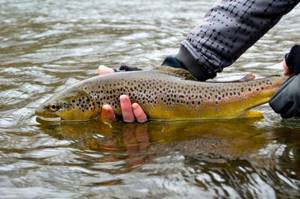
The color of this fish depends on its habitat
The Baikal omul loves junctions with large rivers due to the fact that their water is rich in oxygen. The fish is schooling and small, an elongated body with small silver scales does not weigh more than 800 grams, the back is brownish-green. Record large individuals can be twice the size of normal ones.
The body of the perch is oval, the sides are compressed. It feeds on small relatives and some larger fish, preferring caviar and juveniles. Insatiable, never stops hunting.
Ruffs live almost everywhere. They are very unpretentious and live in flocks. Painted dark green.
Burbot
Night submariner, the only one from the cod family. He swims very skillfully, despite the fact that he spends most of his time lazily plowing the surface of the water.
But if you find burbot in the heat, you can easily catch it with your hands. He becomes inactive, as he cannot tolerate open sunlight.
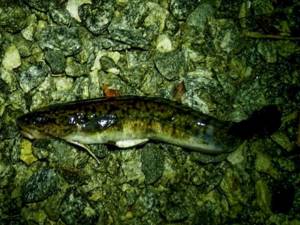
Perch
The most common catch is rivers and lakes. There are about a hundred varieties of them. In size, an adult can be half a meter and weigh up to 5 kg.
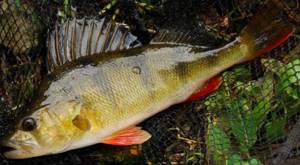
Perch does not tolerate heat well, so it swims at shallow, cool depths. It can be easily recognized by the dull green lines crossing its sides. The contrast of the stripes is clearly visible on the dark bottom of the lake.
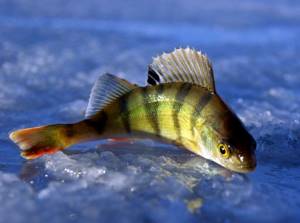
Unusually gluttonous. He loves to fill his stomach to the limit with the caviar of his relatives, not leaving them alone all year round.
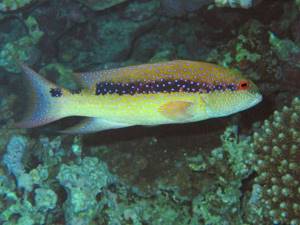
Som
It occupies the first position in size among carnivorous inhabitants living in fresh water. He is very strong and not easy to catch. One of the largest animals caught in history weighed up to 300 kg. Scientists called him a long-liver.
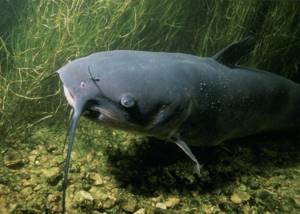
Many believe that he is indiscriminate in his food and eats only decaying flesh. This is not entirely true; the catfish includes mollusks and frogs in its diet, does not disdain mammals, and hunts ducks and geese.
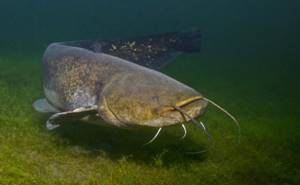
Feeding features of predators
The asp, having gained weight, becomes a full-fledged predatory fish. At the maturation stage, this fish behaves like a typical representative of cyprinids, to which it belongs. At this time, the asp feeds on worms, larvae and insects. Having matured, the asp switches to feeding on fry; its behavior is no different from the lifestyle of an ordinary predator.
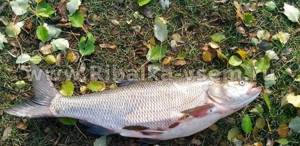
Very often, the habitat and amount of food influence the behavior of the predator. For example, if there are a lot of pike and perch in a section of the river, then the fish willingly eat their smaller relatives. Sometimes even typical peaceful fish become predators. Carp, for example, does not disdain fry and caviar. Rudd can eat fry in the summer. And this happens not so rarely. Fishermen, knowing about this feature of the above-mentioned fish, try to catch them with silicone and other baits.
Typical predators are distinguished by extraordinary strength, agility, energy and great greed. Their body is designed for constant hunting. Sharp teeth easily bite through the body, and the stomach quickly absorbs food and processes it into energy.
The predator needs food as a source of energy. If we see a large pike perch, pike or asp, then their body is slender, filled with strength, and there is not much fat in it. The exception is the catfish, which leads a more passive lifestyle and plays, as they say, “the long game.”
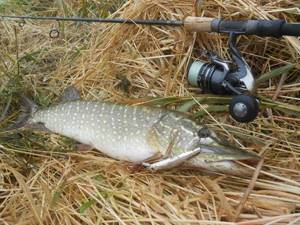
It often happens that a predator consumes an excessive amount of food. This is affected by natural greed and life cycles: spawning, winter, etc. For example, in March the pike becomes a goblin and hunts for everything. It seems that she can easily digest both fox and hares. Fishermen use this successfully. Take another perch. Despite its modest dimensions, this predator boldly attacks roaches, dace and even smaller perches, which are slightly smaller in size than it. Asp and pike perch also hunt actively in the autumn.

Predators have periods when they consume little food and hunt little. This usually occurs during spawning or during periods of so-called low winter. Before spawning, they hunted productively, accumulating a lot of energy, which will last for several tens of days. In winter, predators gather in deep holes and spend the winter there, behaving very passively. Burbot is most active at this time. This fish is well caught in winter and in cold autumn. Burbot spawns in December.
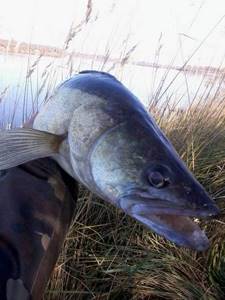
Predatory fish can endure hunger for a long time. The reasons for fasting can be different. These are diseases and environmental disasters associated with human activities. During this period, fish can lose up to 30% of their total mass, but nevertheless remain alive.
After starvation, predators try to make up for what they have lost. Catfish are the most aggressive in this regard. When they are hungry, they can eat anything, as long as there is more. They say that the largest individuals eat large muskrats, foxes and even people. But these are more stories than facts.
